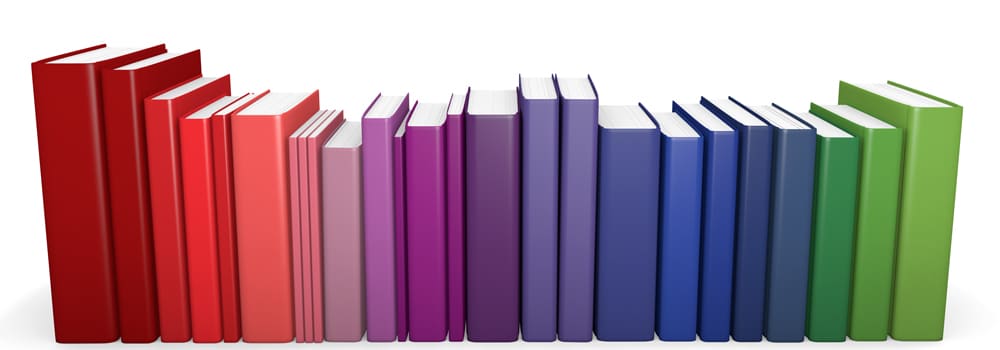How Much Do Hardcover Books Cost?

Hard cover books have become more popular over the years. These types of printed books are often preferred in many situations, including school textbooks, picture books, and novels. In some cases, paperback books may be used in combination with hardcover books, but this is far from the standard. Even though a lot of people choose hardcover books, some of them aren’t sure about what makes up the total cost. That’s why we decided to explore everything you need to know about the subject!

The cost of hardcover books can range from about £10 to £30. The median price is generally around £20. However, there are a few things that will affect the final cost of the book. These include:
- The type of book: Novels, textbooks, and picture books all have different hardcover prices. For example, a hardcover novel will typically be less expensive than a hardcover textbook.
- The publisher: Some publishers are known for their high-quality hardcovers, which often comes with a higher price tag. Other publishers may produce more budget-friendly hardcover books.
- The retailer: Some retailers sell hardcover books at a discount, while others charge full price.
Choosing the right hardback book printing service is important, and Ex Why Zed is the best in the business. We provide high-quality printing at an affordable price, and our customer service is top-notch. We guarantee your satisfaction in every order!
Have you always wanted a hard cover book? Do you need to print a book online? Do you have ideas for a great book that you would like to put into a hard cover form? Well, look no further. Here are some frequently asked questions about hard cover books.

What is short run book printing?
Short run book printing is a process of printing hardcover books in small quantities, usually between 25 and 500 copies. This type of printing is ideal for self-publishers and small businesses who need quick turnaround times and low minimums. There are a few different options for short run book printing, including digital printing, offset lithography, and print on demand (POD). Each option has its own set of benefits and drawbacks, so it’s important to choose the right one for your project.
Digital printing is the most popular choice for short run book printing because it’s the most cost-effective option. This type of printing uses lasers to transfer images onto paper, which means there are no plates or setup fees.
Offset lithography is a traditional printing method that uses metal plates to transfer images onto paper. This option is more expensive than digital printing, but it’s ideal for large print runs. Ex Why Zed has no minimum order quantity which is ideal for student final major projects which requires one-off hardcover books for a hand in. This option is more expensive than digital and offset lithography, but it doesn’t require any minimum order quantity.
If you need more information on this topic, give the Ex Why Zed team a call now.
What is the hardback format?
A hardback is a type of book with a rigid cover and spine, usually made of cardboard covered with cloth, buckram, or leather. The pages are glued to the spine, rather than sewn. Hardcover books are typically more expensive than trade paperbacks. They are often used for reference works and for important or prestigious works of literature. The durability of these books made hardback book printing popular.
Are hardback books better?
Hardcover books definitely have their advantages. They’re generally more durable than paperbacks, so if you’re looking for a book that will last, hardcovers are a good bet. They also tend to have better production values in terms of things like print quality and binding. So if you’re looking for really nice-looking books or options for your short run hardback book printing pdf file, hardcovers are often the way to go. Finally, hardcover books often retain their value better than paperbacks, so if you’re interested in reselling your books later on, they may be a wiser investment.
Why do hardback books have paper covers?
Short run book printing with hardback covers and some hardcover books have paper covers for a number of reasons. One reason is that paper is a more durable material than cloth, so it will better protect the pages of the book from damage. Paper is also less likely to fade or discolour over time than cloth, so it can help keep a book looking newer for longer.
Additionally, paper covers are generally less expensive to produce than cloth covers, which makes them more budget-friendly for publishers and consumers alike. Whether you prefer hardcover or paperback books, there’s no denying that they both have their own unique benefits!
Do hardcover books have a larger print?
No, hardcover books do not necessarily have a larger print. The size of the print is determined by the publisher and is based on the size of the book’s trim (the finished, cut edge of the book’s pages).
If you intend to create a hardcover book, know that hardcover books are usually slightly taller and wider than their softcover counterparts, but this difference is due to the hardcover’s binding—not the size of its print. So, if you’re looking for a book with large print, you’ll need to check the publisher’s specifications rather than simply opting for a hardcover edition.


